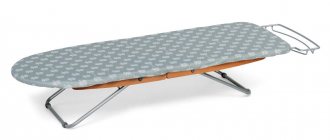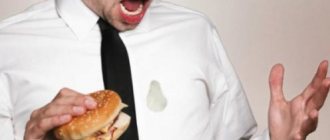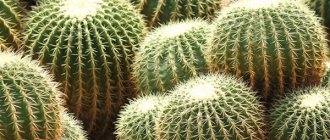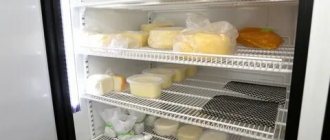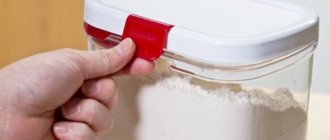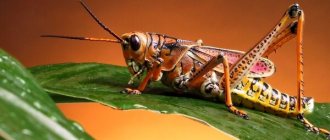Among the vast family of ants there are insects whose diet consists exclusively of plant or, conversely, animal food, as well as omnivores and species with very unusual food preferences. In addition, the diet of ants often changes dramatically after the transition from the larval stage to the adult, and also depends on the season of the year and the role that each ant performs in a large ant community: guarding the anthill, searching for and bringing food, caring for the growing juveniles and females, laying eggs.
Both in the wild and in a person’s home, insects with different types of nutrition can be found. In a human home, ants find a wide variety of food for themselves, no matter how hard a person tries to prevent it: for the survival of a colony, a few small crumbs of bread or grains of sugar that fell from the table to the floor, a drop of oil on a gas stove or smears of jam left on the edge of a jar are enough .
Some species of ants can even attack objects that seem unsuitable for food: watercolor and gouache paints, casein and bone glue, wood, paper. In fact, these and similar things consist of natural ingredients that are quite edible from the point of view of insects or suitable for building a nest.
Settling in gardens and vegetable gardens, ants eat berries, juice of fruits and vegetables, honey from bees, gum from tree trunks, as well as insects. The last fact, unlike all the others, testifies in favor of ants. Although, in general, most people assess the proximity to ants as unpleasant and make every effort to get rid of these insects in the house and on the land.
You can find reports from gardeners that in the spring ants even feed on young cabbage and tomato seedlings, although these are rather rare cases.
Food distribution
These insects constantly draw various pieces of food into their home, after which the process of distribution begins.
Animal proteins are necessary for proper growth and development of larvae. Ants can take gelatin from a human home, as well as the remains of dairy or egg dishes. During the period of active growth, the larvae urgently need proteins.
The diet of adults is based on carbohydrates. These include nuts, seeds, tree sap, flower nectar, plant roots and the pulp of various fruits. All carbohydrates are easily absorbed by insects.
Ants often take out various sweets from human houses - jam, sugar or honey.
Each type of ant produces a specific food
Today there are several thousand species of ants. And each genus in the wild has a certain type of food. In some species, nutrition may differ radically. Among the ants there are also real gourmets.
Reaper Ants
There are more than 30 species of harvester ants in Europe. Most of their diet consists of plant foods. Approximately 96% of the diet consists of grass seeds, dry fruits, and various grains.
The larvae feed on seeds and grains, which are previously cleared of the shell by workers, ground and abundantly moistened with saliva. This species makes its nests underground, and the houses can go 2-4 meters deep (depending on the size of the colony). Huge reserves of food are made in the nests for the winter.
Often this type of insect settles near vegetable gardens and fields. But harvester ants do not pose any danger to garden crops. They collect grains that fall off on their own and are no longer suitable for human food. The plant itself is not harmed at all.
Woodworms
The genus includes more than 1000 species of ants. Woodworms can also be called “camponotus”. Insects have unique bacteria in their intestines that can easily digest even very coarse fiber. The diet of this genus is based on animal and plant foods.
In nature, woodworms feed on various insects, aphids, and gums. If they settle in a human’s house, they will enjoy protein foods with pleasure. They prefer sweet fruits, honey and sugar.
This species lives in half-rotten stumps and even wooden houses. Ants have strong teeth, with which they are able to gnaw numerous passages in a tree. Young branches of fruit trees can also be damaged.
Pharaoh ants
Often called house ants. In nature they can eat a wide variety of foods. They live in subtropical and tropical climates. Recently, this species has perfectly adapted to life near humans.
If pharaoh ants live in an apartment, they can feed on almost everything that comes their way. The diet of this species includes various cereals, bread, dried or fresh fruits (both fruits and vegetables), sugar, and pasta. They will not refuse sweets, butter, various dairy or meat products, spices and even semi-finished products.
Black garden
Most often this species settles in forests or gardens, in parks, as well as vegetable gardens. Sometimes found in a person’s home. Insects live in half-rotten stumps and soil, including the walls of houses and window cracks.
This species is an omnivore and can feed on a variety of foods. Prefers sweet foods and is very fond of aphids. Often ants become the main “breeders” of aphids in gardens and vegetable gardens.
Having settled in a human house, they can eat a wide variety of foods. Most often they start hunting for various sweets.
This is the most common agricultural pest.
Red forest
These insects are of great benefit to the forest. They clear it of carrion, actively promote the spread of tree seeds with various herbs over a large area, and are beneficial for soil formation. In nature they feed on a wide variety of foods.
They can also appear in a human home. They are attracted to the aroma of sweet food. But they live strictly in the forests and do not live in a person’s house on a permanent basis.
The larvae consume exclusively protein foods. The diet of adults includes animal and plant products.
Ants with an unusual type of nutrition
There are species of ants that feed on quite unusual food:
- Leaf cutters. They feed strictly on mushrooms, which they grow on their personal “farms” set up in underground anthills.
- Dracula Ant. The larvae feed on insects. Adult representatives of the species suck out a unique nutritious juice from the larvae.
- Honey ants. Some individuals actively fatten up and become like round barrels. During periods of hunger, they begin to produce a unique syrup-like liquid that feeds the rest of the family.
- Stray ants. The diet includes larvae and various insects. They can also feed on small lizards with frogs, and even recently hatched chicks that do not yet know how to fly.
- Bulldog ants. They can jump and actively hunt small invertebrates and various insects. The larvae feed only on protein foods.
Oral apparatus
The mouthparts of these insects are “gnawing”. The mouth contains:
- upper lip (labrum) ;
- labia inferior (labium) ;
- mandibles (jaws) .
Depending on the species, the upper jaws (mandibles) and lower jaws (maxillae) can be: large and small, blunt and very sharp, with teeth and simply smooth, closing and overlapping. The mandibles have the ability to work independently even with the mouth closed.
The lower lip has a tongue, which is an organ of taste, and is also used by ants to clean their bodies.
What do ant larvae eat?
There are two types of larvae - some can feed on their own, while others cannot. Significantly more of the latter. Therefore, adults are responsible for their nutrition, acting as nannies. The larvae feed on food that has been partially digested in the stomach of adult insects.
Self-feeding larvae feed on dead insects. Their diet may also contain larvae from a neighboring anthill, including trophic eggs and various protein foods.
Their entire fate directly depends on the nutrition of the larvae. For example, after pupation they can become a queen or slaves (workers). It is the worker ants who decide who will become an ordinary ant and who will become the “queen” in the nest.
Ant feeding frequency
The feeding frequency of insects is directly affected by the amount of food that is nearby. It is important that the food be constant, since ants need to regularly develop endurance and work actively. During the day they can eat up to 5 times.
Insects responsible for searching for a food source can take food directly at the place where they found it, as well as while carrying food to the nest to feed the entire colony. Even having settled in human housing, where there is constant access to food, they will not leave a single crumb unattended and will pick up everything that comes their way.
In the absence of various goodies, the ants switch to other food sources. The usual diet is easily replaced by food that is non-traditional for a particular species. This is necessary to replenish lost energy and ensure adequate nutrition of the uterus, which brings new offspring.
Individuals that permanently live in the anthill are responsible for the safety of the female and feed on the available supplies supplied by working insects.
Forest life
The working red forest ant really spends all its time working. The life of an anthill revolves around the queen - this is a large female who lays eggs. The rest of the ants are also females, only their ovaries are undeveloped. Males do not live long: after the mating season, when they are no longer needed, they die.
The workers perform different tasks: some build an anthill, foragers get food, some guard the aphids, and some are constantly near the queen, cleaning and feeding her. This job is the most prestigious. By feeding the larvae, the ants do the forest a service - after all, for this they exterminate pests.
The most active life of ants is observed from early April to October. On a warm summer day, females fly out of the nest to mate. There are several possible scenarios for further developments:
- After mating, the female returns to her native anthill, where she is given a place. She starts her own family, and when space becomes scarce, some of the ants separate, founding a new colony.
- The future mother of the family can immediately end up in someone else's anthill - there, too, a warm welcome awaits her.
- The fertilized female settles in the nest of forest brown ants, where there is no queen of her own. They begin to look after her, the eggs are placed in special places, and they are raised. Over time, the descendants of the red ant become full-fledged owners there and rebuild the anthill in their own way. But if a fertile female of its own appears in such a habitat, then both species can coexist perfectly and even lead a common household.
During a season, offspring of only one sex can appear in an anthill - either males or females. In this way, nature protects ants from inbreeding (closely related relationships).
Ants are thrifty
Ants are very thrifty and always prepare a large amount of food for the winter, which is enough to feed the entire colony. For example, harvester ants living in the south of the Russian Federation can prepare more than 1 kg of different seeds over the summer. This will help them survive the winter calmly and not starve.
In winter, there are no larvae in the anthill, so the insects do without protein food. Harvester ants mainly feed on various seeds, which they manage to transfer to the nest in sufficient quantities.
Northern ants hibernate for 9 winter months. During this period they do not need food.
Interesting facts from the life of an anteater
Anteaters can make nests in hollows in trees or in burrows dug by other tropical animals. Most often, the anteater is a solitary animal, but there are also real couples who live together for many years.
Anteaters are completely devoid of teeth, but this does not stop them from eating thirty thousand ants or termites in one day. The tropical animal is an excellent swimmer and can easily overcome the water surface of even very large reservoirs and rivers.
Even wild cats, including the jaguar, do not risk attacking too large individuals of a giant or large anteater, and thanks to its powerful and clawed paws, the animal is capable of killing a relatively large predator with one blow.
In natural conditions, anteaters are quite peaceful and do not show aggression towards other animals, and the average life expectancy is approximately a quarter of a century.
What do ants eat in houses and apartments?
The diet of insects living in human habitation differs significantly from the diet of representatives of the same species in the wild. At the same time, they become almost omnivores and can feed on both organic and chemical products.
Where do they find food?
Ants can find food almost anywhere. Due to their small size, they easily penetrate into various crevices. To avoid having to deal with the “ant problem”, you should always wash the dishes and remove leftover food.
Ants can find a source of food for themselves even in a constantly overflowing trash can. All food products must be hermetically sealed. There should be no food or even crumbs on the table. Otherwise, the apartment will become a large dining room for these insects.
What do they prefer?
The larvae of household pests feed on the remains of egg and dairy products, and gelatin. Adults prefer various sweets - for example, sugar, jam, honey, chocolate.
They are attracted to fatty foods that have a strong aroma. This includes cakes, sweet muffins, and onion bread.
Most often, apartments are inhabited by pharaoh ants, which can find food for themselves even in a clean room.
Previously, it was believed that ants feed only on organic matter and do not consume synthetic and chemical food. But today insects have perfectly adapted to the human home and can feed on almost anything, including cosmetics, washing powders, etc.
Animal husbandry and gardening by ants
Ants are such organized insects that they have even learned to breed aphids and grow mushrooms.
For these insects, aphids are a source of honeydew, so they are always adjacent to it. Ants take care of aphids, protect them from predators, help them move to other plants, and in return they “milk” them, collecting sweet honeydew. Moreover, some sources even claim that ant nests have special chambers where they shelter aphids in the winter.
As for mushrooms, leaf-cutter ants do this. Representatives of this species set up a special room in the anthill, where they store crushed plant leaves and spores of fungi of a certain type. In an equipped “greenhouse”, insects create the most comfortable conditions for the development of these fungi, since they are the basis of their diet.
What do ants eat in the garden?
The vegetable garden and garden are places where ants can easily find a source of food for themselves. Most often they cause the appearance of aphids. It is aphids that will be the main food for pests.
Where do they find food?
In the garden, ants are able to find food for themselves almost everywhere. The diet may contain plant residues, dry and fresh fruits and berries. Therefore, they become the main threat to the crop.
You can protect your garden and garden from pests only by starting active fight against ants. You cannot stop until all the ants have left the area.
What do they prefer?
There is no main product in the diet of ants. They can feed on almost anything they find along the way. For example: fruit pulp, seeds, nuts, rhizomes, tree sap.
Underground roads of wood borers
The stump in which such forest ants live is surrounded by fresh and old sawdust, which indicates continuous work.
At the same time, not a single individual is visible around the dwelling itself. The erroneous impression is created that the insects do not leave the shelter. This is not entirely true. It’s just that the paths they use are not visible from the outside. Black forest ants make underground passages in the surface soil that look like real tunnels. Where do they lead? It's simple: a network of such passages stretches to the nearest stumps and spruce trees, from where woodworms deliver insects and pollen. Underground roads are an excellent alternative to dangerous land routes.
How to deprive ants of food?
Getting rid of ants that have settled in an apartment or in a garden is quite difficult and problematic. It is necessary to begin pest control in a timely manner before their numbers increase.
In the garden
In the garden and garden, you must always keep the beds clean. It is important to weed weeds in a timely manner and ensure that aphids do not appear. As soon as this pest is noticed, the plantings need to be treated urgently. Almost immediately the ants come after the aphids, since they are the basis of their diet.
All plant debris must be removed in a timely manner. This also applies to fallen fruits and berries, since ants will enjoy these sweets with pleasure.
In an apartment or house
It is very easy to prevent ants from appearing in your apartment. It is enough to maintain the ideal frequency in the house. First of all, this applies to the kitchen, where bread crumbs often remain on the table.
It is recommended to store all sweets and cereals in a container with a tightly closed lid. If the ants cannot find a food source for themselves, they will quickly leave the house and go in search of a more comfortable habitat.
A little about the digestion process of ants
In ants, the food organs are divided into the preoral chamber and the digestive tract. Under the lower lip there is a preoral chamber, which acts as a receiver for semi-liquid and liquid food, including various residues after cleaning the body. Here the food is “sorted” - everything edible goes into the mouth, and inedible particles are released in the form of small lumps.
The digestive tract is divided into anterior, middle and posterior sections. In the anterior one there is a crop, which acts as a “social stomach”, since food intended for the entire nest is stored in it. The process of digesting food occurs in the swollen midgut, called the stomach.
Ants are an integral part of the ecological chain. In nature they are of great benefit. But once settled in a house or on a plot of land, they become a big problem. The main enemies of pests are cleanliness and order!

